THE CHAUTAUQUA CONNECTION
The Search for Camp-Telufa-on-Lake
And
The Chautauqua Connection
Of the
William James & Agnes Coe Carpenter Family
Circa 1905-1925
Copyright 2009
Jack Carpenter
290 Cubbedge Road
St. Augustine, Florida 32080
This vignette of the Wm. J. Carpenter family history is included here to give readers some insight into the personal life of the family during the apex of his architectural career while practicing in Pittsburgh, Pennsylvania. Researchers are invited to add additional information about Camp Telufa in their comments.
INTRODUCTION
During the 1950s my father, Edward Coe Carpenter, gave me a brass ship’s bell that he said came from a yacht that had belonged to a Mr. Welch of the Welch grape juice company. According to his brief account, when he was a teenager (1914-918) the family spent summers on a lake in New York State and his pal was Mr. Welch’s son. The yacht sank on the lake one year and they dove on the wreck and salvaged some of its equipment. His share of the loot was the bell, which he brought to Florida with him. (The bell measures about 8 in. diameter X 7 in. high, a proper size for a lake yacht, either steam or gas powered.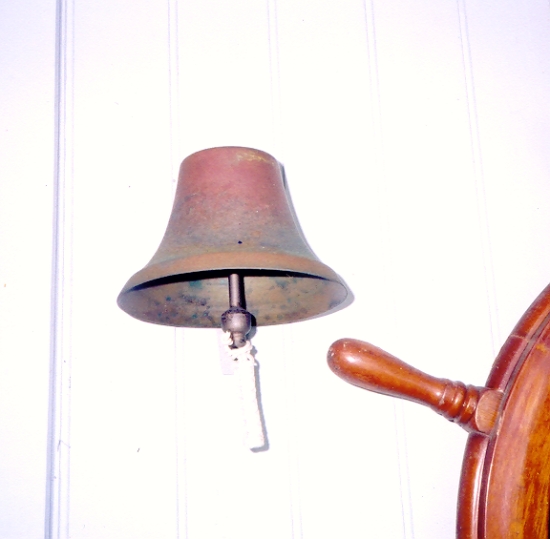
The only specific information I had about Lake Chautauqua was the reference to a “summer place-Camp Telufa-on-Lake, Chautauqua, N.Y.” in Grandmother Agnes Coe Carpenter’s biographical sketch in “Compendium of American Genealogy”. This was probably written in the early 1920s as she was applying for membership in Daughters of the American Revolution, giving St. Petersburg, Florida as the winter address. (They had moved from Pittsburgh, Pennsylvania to Florida about 1921.)
I was curious about the “Chautauqua Connection” at Camp Telufa because a number of references and circumstances indicated that it was an important phase of the family history. There were no pictures or notes in any of the family archives and a request to the Welch Corporation was fruitless, as was an inquiry to the Chautauqua Chamber of Commerce. But since a visit to the area in the summer of 2002 and help from several local researchers I have been able to piece together what I think is a reasonable account of the family relationship to this area while they were living in Pittsburgh (Beaver) during the late 1910s and in Florida in the early 1920s.
CAMP TELUFA-Then & Now
The Chautauqua Community and Institute, being highly dedicated to the arts and intellectual pursuits would certainly have appealed to grandmother. An exposure to their summer offerings of cultural family learning vacations including a conference center, symphony, opera, theater, and religious programs would have been an environment she would have found hard to resist. Having received an extensive education at Edinboro and Clarion Teachers training schools, Allegheny College, and Meadville Conservatory of Music, she would have wanted to provide such inspiring surroundings for the education of her sons, although I’m sure they would rather have been canoeing on the lake.
Agnes Christina Carpenter
Pittsburgh circa 1900
Portrait by Richards, Pittsburgh
The summer music programs would have held particular interests for the family. I recall Dad saying he had heard John Philip Sousa and Mario Caruso in New York. At the time I assumed he meant New York City, but it now seems more likely these famous recognized artists were at Chautauqua Institute giving summer concerts.
I had been unable to find any reference to a Camp Telufa, but during my visit someone mentioned that his father recalled that once upon a time there was a settlement named Telufa on the northern side of the Lake, across from The Chautauqua Institute, near Mission Meadows. I later learned that early travelers and the mail arrived in the area at the Mayville railroad station on the northern end of the Lake via the Pennsylvania Railroad. It was then carried to the villages around the lake by steamboat, departing from the P.R.Dock, but I could find no record of a Telufa post office.
There were several summer church retreats or camps on the northern side of the Lake and it seemed possible that one of them could have been called Telugu-on-Lake. If so, mail would probably have been picked up daily by a small boat crossing to the Chautauqua post office. If the “camp” was only a family campsite they could have given it the name and had mail served through the Chautauqua post office with pickups being done by canoe by the boys. The 1881 Historical Atlas shows a Point Chautauqua Post Office on the northern side of the lake, but it was probably closed by 1920, so does no seem to play a part in these events.
It has been reported that the Welch family had a summer residence on the Lake opposite The Institute, so it is likely that they had their own boat dock which could well have been the location of the mishap with the yacht. The yacht sinking had to have taken place in shallow water for the young boys to be able to free dive on it and carry equipment to the surface. The locale has been confirmed as Chedwell, the summer estate of Charles Welch, which he himself named CHarles EDgar WELch. It was opened in 1912 to girls from 12 to 14 years old. There was a Charles Welch recorded in the 1920 census as being 16 years old, and he was probably the “pal” who did the diving for the bell.
The Town of Chautauqua had both a yacht landing and a steamboat landing in 1881 which were probably still in use during the early part of the century, but neither is now in existence. There is a large marina to the south of the old steamboat landing, but all traffic to the village is now by automobile or bus, except for the sightseeing steamer.
Portrait of Wm. James Carpenter during his
Early days in Pittsburgh, Pennsylvania c1900.
Taken by “Late Damon Studio, Drosser, Pittsburg.
1937 Souvenir Pocket Map of Lake Chautauqua showing Camp Telufa
Courtesy of Steve Carlson
In an antique shop in Chautauqua I found a 1907 postcard of the steamer and landing which shows the pier and classic Victorian pier house on Steamboat Point, but none of the old structure remains today. (The post Card was mailed from Chautauqua by a “Betty” to Mrs. David Eckman, 21 Price St., Jamestown, N.Y. in August, 1907.) The current photograph shows the Miller Bell Tower which was built after the demise of these structures, as was the modern boathouse. Note that the offshore swim float appears in both pictures in almost the same location. To return it to the same spot every spring for nearly 100 years certainly establishes a tradition.
1907 Postcard of Steamboat Point, Chautauqua, N.Y.From the collection of Jack Carpenter
Photo by Jack Carpenter Steamboat Point, Chautauqua, N. Y. 2002
The 19th century paddle wheel steamer Chautauqua Belle is still active on the Lake, operated by Captain James Loutzenhiser. It departs from the old Steamboat Dock at Mayville, making daily rounds of the northern end of the Lake, carrying sightseeing passengers, but no mail.
Chautauqua Belle off Steamboat Point-2002. Photo by Jack Carpenter
In this current photograph taken looking across the lake the old structures are gone, but the steamboat and the line of hills across the Lake seem just as they were 100 years ago. It may be imagination, but a prominent roof across the Lake appears in this photo above the forward gangplank and in the post card to the right of the steamer, although taken about 90 years apart. This is the approximate position where we believe Camp Telufa was located.
At the beginning of the family visits to this area which is only 120 miles from the Beaver-Pittsburgh area, it is likely that the family traveled to Mayville by train and then by boat to the camp area. In later years the northern side of the lake had direct rail service. The 1937 Historical Map shows a railroad (JW & NW RR) closely following the shore line, connecting Mayville and Jamestown, passing within a few blocks of Camp Telufa. By this time it had probably replaced the steamboat as the major transportation around the lake area.
After the move to Florida grandmother still took the boys on summer trips, and Chautauqua would have continued to be a very desirable destination. There are no accounts of how they traveled between Florida and New York, but it could have been either by train or by automobile, most likely the latter. Either way, it is hard to imagine packing four teenage boys and all their gear and traveling 1200 miles for a few weeks of summer vacation. I have a feeling that towards the end of this era she was happy to do it alone by train, and left the boys in Florida to their own devices.
From the collection of Jack Carpenter. The car is being driven by Agnes. William Carpenter is in the passenger’s seat.
If by automobile they probably used the open “touring car” shown in the photograph taken by Edward at Daytona Beach, Florida in 1919. They might have occasionally made a stopover in the Parker/Brady Bend, Pennsylvania area on the Allegheny River. This was where Agnes was born, and many members of her large family still resided there. During the Beaver residency, if Grandfather Wm. J. Carpenter commuted to the lake on weekends he probably would have traveled by train.
APPENDIX
BIBLIOGRAPHY
Images of America, CHAUTAUQUA LAKE REGION, Kathleen Crocker & Jane Currie
History of Chautauqua County, New York, and its People, John P. Downs & Fenwick Y. Hedley. American Historical Society, Inc. 1921.
Chautauqua County, a History, Helen G. McMahon.1958. Henry Stewart Incorporated, Buffalo, N. Y.
RESEARCH
Very important research and guidance on this project was provided by Beckie Howe of Chautauqua County Tax Assessors Office. Pertinent excerpts from her emails follow here:
Email of August 20, 2002
Hi Jack,
You will be pleased to hear that Steve, the surveyor we were talking to, brought a copy of a map in that shows Telufa.
His dad has this map, but it’s mounted between Plexiglas. Steve scanned the north end of the Lake on the map. It shows “Camp Telufa” between Dewittville and Chedwell.
This was a “Souvenir Pocket Map”, First edition done in July 1937, and the third printing was done April 1946. It shows the points of interest around the Lake. (Note that Camp Telufa appeared on this map as late as 1946)
Were you able to find any other information about Camp Telufa? I’m pretty sure it is located where Mission Meadows Methodist Church Camp is now. But if you didn’t find anything on it, please let me know and I will see if I can find an old post card or photo of Camp Telufa.
Also, now that I know where it is, maybe I can find a map in our cabinets at work.
Beckie Howe
Email of August 29, 2002
Hi Jack,
I received your letter and enclosures today. Thank you so much for the print of your grandfather’s painting. It is beautiful. I love gardens. I can feel myself standing on that pathway.
I am still trying to find more information on Telufa. Right now I am looking for an old deed which mentions Camp Telufa. The more Ken (the man from Tax Maps) and I compare the old map with his tax map, the more we don’t think it is the camp they now call Mission Meadows. Let me spend some more time looking. I enjoyed the “Chautauqua Connection”. It is very nicely written. Today, I tried to find a deed for Welches living in the same area as Telufa. I thought it might give me a better idea of where the camp is located.
The surveyor we talked to that knew about Telufa is Steve Carlson. When he comes in, I’ll ask him if his father knows any more about Camp Telufa. He only comes in once in awhile….isn’t it strange that he just happened to be there the day you were visiting….strange and lucky. I can’t believe that no one else at the Court House ever heard of Telufa.
Michelle Henry is on leave. I’m not sure how long she’ll be gone, but in the mean time I will help you with some research. I’m intrigued by the whole story, and I love learning more history of the Lake area.
Beckie
Email of September 10, 2002
Hi Jack,
I don’t have anything new, but I didn’t want you to think I had forgottenabout you. I went down to the Fenton last night and read every book onsteamboats on Chautauqua Lake. I found nothing on Telufa. I read about early mail delivery on the Lake, and that didn’t mention Telufa either.
A lady who comes in here all the time to do research has put a note up at thePost Office over in Dewittville asking about Telufa. She said that maybe someolder person in the area might remember the camp being there.
Beckie
Email of October 15, 2002
Dear Jack,
You might think I have given up on Camp Telufa, but I have been researching. I just received a note from a Brenda Ecklund. She says “My family owned a cottage near Mission Meadows camp since at least the 1940’s. It was built by my grandmother’s great uncle Carl Swanson. Telufa is what my mother and aunts (the current owners) put in the phone book as its address. When I was growing up in the 60’s and 70’s the tract where Crosswinds now is, was vacant and abandoned looking. I understood that it was formerly Camp Telufa. I need to ask my grandparents for details.”
I think she might be our best link for an answer. Maybe her grandparents will have pictures. What a find that would be. I checked out her aunt’s listing in the phone book and sure enough, it says J.R Ecklund, Telufa.
I wonder if the cottages sat next to the camp. Another lady thinks a little row of blue cabins might be what is left of the camp.
.Beckie
Email of October 30, 2002
Jack,
I have to tell you, one of the searchers came to me this week about Camp Telufa. She was doing a search on the Crosswinds, and a will that was involved in the search, told about Telufa and the cottages that were there next to the camp. I am hoping to get over there this weekend, and see if I can get some pictures, now that I know where I’m looking.
Another girl e-mailed me and said her grandparents had a cottage at Telufa, and her aunts use the Telufa address in the phone book. Suddenly Telufa is popping up.
Beckie
WILLIAM J. CARPENTER BIOGRAPHY
Wm. James Carpenter Born: London, England 1864
Died: Palatka, Florida 1953
Wm. James Carpenter studied art and architecture in England before immigrating with his family to Baltimore, Maryland. He practiced residential and commercial architecture in El Paso, Texas, Spokane, Washington, Pittsburgh, Penn., Philadelphia, Penn., DeLand, Fla., St. Petersburg, Fla., and Daytona Beach, Fla.
He was recognized as a prominent architect in central Florida during the 1920s. While practicing in DeLand from 1920 to 1937 he designed some of the most significant buildings in the center of the city. These included the First National Bank Building, The Wisconsin Avenue Elementary School, the Putnam Hotel, and the Masonic Temple, all still in use in 2002. He also designed several residences in St. Petersburg, the Hotel Espiritu Santo in Safety Harbor, and numerous school buildings in Volusia County, most of which are still standing and in use some 80 years later. Several of these buildings are on National & state Registers of Historic Places.
He established a studio in Daytona Beach, Fla. on Oceanway and later on Wild Olive in the early 1930s, specializing in watercolors of Daytona, Palatka, and other scenic Florida sites.
END OF THE CHAUTAUQUA CONNECTION
11 Comments »
RSS feed for comments on this post.
Leave a comment
Create a free website or blog at WordPress.com.
Entries and comments feeds.


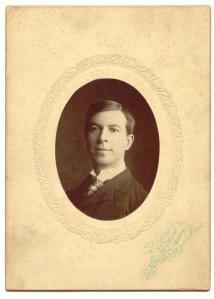



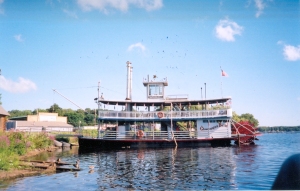

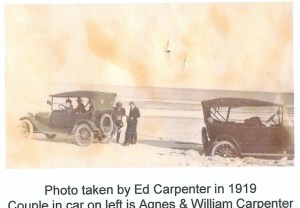
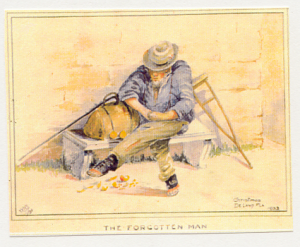
I ran across your posting by accident and found it quite interesting as my family owned “telufa” from th early 1900s intil it was closed and sold to a develop in the 70s.
My grandfather got the property in the late 20s. I am not sure if hebought it or inherited it. His name was Harold Johnson. He was a Doctor from Buffalo NY. I grew up there from 1946 until my family sold it in the early 70s. ( or late 60s). There were 21 or 22 cottages for rent at that time. Some were just one room building with outhouse and others where 2 & 3 room cottages with inside pluming . There were small fishing boats for rent .
In the 30s and 40s there was a small store.
My grandfather lived in a large 3 story house on the lake front. The cottages were known s a local landmark from the lake. They were all paint white with red trim and red roofs.
Telufa was started as a fishing camp in the late 1890s, 1900s. My grandfather once told me that the word telufa was an Indian word meaning ” fishing camp” or “fishing spot”. When it first started out there were just tent sites along the shore. Then around 1910 they added wood platefoms for the tents.
Telufa 0n the Lake or just plain Telufa as I knew it, was located just north of Mission meadows and now is Cross Winds. I hope this fills in some gaps for you.
Comment by James G Smith— August 4, 2013 #
Jim Smith….I was extremely happy to see your post . My family “The Neffke’s” spent summers at Telufa from the early 60s until your family sold the property. It was a wonderful place to spend our childhood.Everyone there became our family. We we’re introduced to Telufa by my Great Uncle’s William and Norman Grimm who spent time there prior to the 60s.
Comment by Sharon Neffke Sroka— September 25, 2018 #
Sharon,
Thanks for the comment. My family was not associated with Camp Telufa after the early 1930s, but it was good to here it was still in existence in the 60s. It must have been a great place to spend a summer. Jack
Comment by jackncb— September 27, 2018 #
Hello James,
Great comment. It helps fill in some of the details of how my Grandmother Agnes Coe Carpenter and her four sons Edward, Robert, Richard & Clarence spent their summers while Grandfather Wm. J. Carpenter was practicing architecture around the country. This probably covered the period of 1915 to about 1930. Do you think there might be any registers or photos that could verify this?
The family was probably friendly with your family while there. Small world, isn’t it?
I really would like to find out more about the mythical Welch yacht. Any suggestions?
Jack
Comment by jackncb— August 6, 2013 #
Hi Jack; I would just like to tell you that my family andmyself spent all of the summers from the mid to late 50’s through most of the 60’s. I have so many beautiful memories and pictures of the time we spent there. There really was no where else like. We all became like family,looking out for each other and spending memorable moment together. It was a unique and beautifully peaceful place to escape to and I am thankful that I was able to be a part of Telufa. If you would like to hear more pleae contact me through me email. thank you..I knew the Johnson Family and Dr. Harold Johnson and His housekeeper Frances Higgs.I even adopted one of their kittens and named him after Doc’s dog Butch. thank you for reading this.
Comment by nancy catanzaro— February 7, 2014 #
Nancy, Yes, it seems like a great place to spend summers. My Dad had many stories about his good times there. Thank you for the comment. Jack
Comment by jackncb— February 8, 2014 #
May I ask when your dad spent time at telufa..What years…
Comment by nancy catanzaro— February 8, 2014 #
Sure, but it was way before your time is why I did not comment more. As well as I can tell he was there as a teenager during the WWI years of 1914-18, and probably never back there later. But my grandmother Agnes Coe Carpenter continued spending summers there and claiming Cakmp Telufa as an address into the 1930s. Jack
Comment by jackncb— February 9, 2014 #
Jack, my name is Mike Hill and I graduated from the University of Florida in 1969. I am a member of a social fraternity by the name of Pi Kappa Phi, the same fraternity your father help organize on campus in 1924/5. I am working to try and identify our brothers who served our country in the military and was hoping you might be able to share any information about Edward Coe Carpenter.
Thank you for your time.
Comment by Anonymous— June 10, 2016 #
Mark
Sounds like an interesting project. Dad was not in the military–Too young for WWI and too old for WWII. I’ll keep in touch with you. Jack
Comment by jackncb— June 24, 2016 #
In my reply to Sharon a few minutes ago I meant to point out for the record that the Carpenter family had no interest in the ownership of Camp Telufa.. Jack Carpenter
Comment by jackncb— September 27, 2018 #